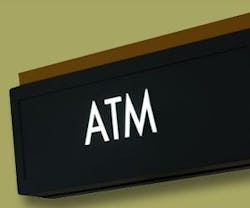Tips for Effective Signs
Signs and graphics have three purposes: to inform, direct, and sell. In the past, using high-quality graphics was only within the budgets of large companies; however, as cutting-edge technology continues to become more affordable, and new products or styles of existing products are introduced, the quality and range of display options have improved. To begin the planning process for effective signs, you must first help your clients determine signage needs. FASTSIGNS Intl. offers some advice to architects on how to get started with the signage process in commercial buildings.
Some basic questions to go over with your clients:
- How long will the signs be used?
- What are the signs being used for? Temporary or permanent? Indoors or outdoors?
- What is the viewing distance for each sign?
- How much time does a viewer have to read each sign?
- What’s the viewing environment? Does the site have prominent street frontage or is it hidden behind another establishment? Is it a standalone? Is there lighting on the site?
- What kind of mounting device will be needed for the signs?
- Are there local sign ordinances or restrictions that would prevent your clients from displaying certain types of signs?
- If your clients are planning to include logos of other companies (i.e. vendors), do they have written releases?
- When do your clients need the signs?
- What is the budget?
There’s virtually no limit to what a good signage program can do for your clients. When discussing signage options, keep these tips in mind:
- Keep it consistent. Integrate your creative and message across all marketing channels.
- Make it memorable – fast. As with TV and radio ads, you only have a few seconds to win someone’s attention. Each second counts. With the use of full color digital graphics, your message is easier to remember.
- Design for maximum effectiveness. Keep it simple. A company logo, a colorful representative image, and a message that gets to the point are effective ways to design your sign. Studies show that, by adding color or photos, you increase the effectiveness of your sign by 78 percent.
- Add variety. A good signage program isn’t just a single sign. To create maximum impact, carry your theme through all your signs and graphics: on your floor, the side of the building, the windows, etc.
To communicate effectively, signs should be highly visible and attractive. Make note of these four design principles:
- Visibility. Achieved by ensuring that the sign’s lettering is clearly distinguishable from its surroundings.
- Readability. Ensures that the message is correctly comprehended. Make the sign easier to read with specific graphic elements and color choices.
- Noticeability. Draw the viewer’s attention by changing colors, messages, size, or shape frequently.
- Legibility. Utilizing certain typestyles and spacing ensure that letters on the sign are discernible from other letters.
